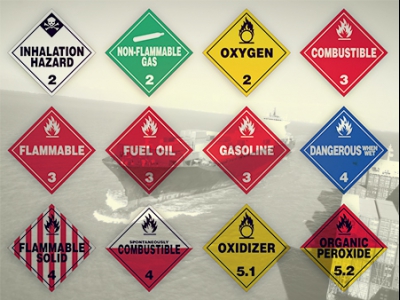DNV GL issues Technical Update
The new 2015 Guidelines for the Development of the Inventory of Hazardous Materials, RESOLUTION MEPC.269 (68), have been adopted by the MEPC 68 meeting and supersede Resolution MEPC.197 (62) published in 2011.DNV GL issued a Technical Update summarizing the main changes that will influence the preparation and certification of the Inventory of Hazardous Materials (IHM).
The major changes include revisions of threshold values, the bulk listing of common items, exemptions, loosely fitted equipment and the listing of radioactive sources.
1. THRESHOLD VALUES OF HAZARDOUS SUBSTANCES
The threshold values for 13 controlled hazardous substances have been freshly determined. The revised threshold values should be used for IHMs developed or updated after the adoption of the revised values and need not be applied to existing IHMs and IHMs under development. However, when materials are added to the IHM, such as during maintenance, the revised threshold values should be applied and recorded in the IHM. The Material Declaration has also been updated in accordance with the revised threshold values.
The asbestos threshold value is changed from no threshold level to 0.1%. A 1% threshold value can be applied not later than five years after the entry into force of the Convention. This should be recorded in the Inventory and, if available, the Material Declaration. The threshold value of 0.1% does not need to be retroactively applied to existing IHMs. The revised threshold values are stated in Tables A and B below.

Table A Materials listed in appendix 1 of the annex to the Convention
(Click on the image for larger view)

Table B Materials listed in appendix 2 of the annex to the Convention
(Click on the image for larger view)
2 BULK LISTING OF COMMON ITEMS
There is no need to individually list identical or common items, such as but not limited to bolts, nuts and valves. Similar items can be listed together. The locations can be generalized, e.g. the location may only include the primary classification such as throughout the ship.
3 EXEMPTIONS
A new definition, Exemption, has been introduced into the Guidelines. Exemptions are materials that do not need to be listed on the IHM, even if such materials or items exceed the IHM threshold values. Two kinds of exemptions are specified in the Guidelines in paragraph 3.3 Exemptions materials not required to be listed in the IHM:
Table B materials in general construction
Materials listed in table B that are inherent in solid metals or metal alloys, such as steels, aluminiums, brasses, bronzes, plating and solders, provided they are used in general construction,such as hulls, superstructures, pipes, or housings for equipment and machinery, are not required to be listed in the IHM.
Printed circuit boards
Although electrical and electronic equipment is required to be listed in the Inventory, the amount of hazardous materials potentially contained in printed wiring boards (printed circuit boards) installed in the equipment does not need to be reported in the Inventory. Table D, regular consumable goods potentially containing hazardous materials, provides examples of electrical and electronic equipmeand more detailed information.
4 LOOSELY FITTED EQUIPMENT
A new definition of fixed and loosely fitted has been added in the revised Guidelines, and loosely fitted equipment and batteries should now be listed in Part III of the Inventory.
5 LISTING OF RADIOACTIVE SOURCES
All radioactive sources should be included in Material Declarations and in the Inventory. A radioactive source means radioactive material permanently sealed in a capsule or closely bonded and in a solid form that is used as a source of radiation (not radioactive residues or contamination). This includes consumer products and industrial gauges containing radioactive materials. Radioactive sources should be included in the Inventory, regardless of the number, amount of radioactivity or type of radionuclide.
For more information please read the Technical Update by clicking below:
Also, click below to read IMO Circular MEPC.269(68)
Source and Image Credit: DNV GL


































































